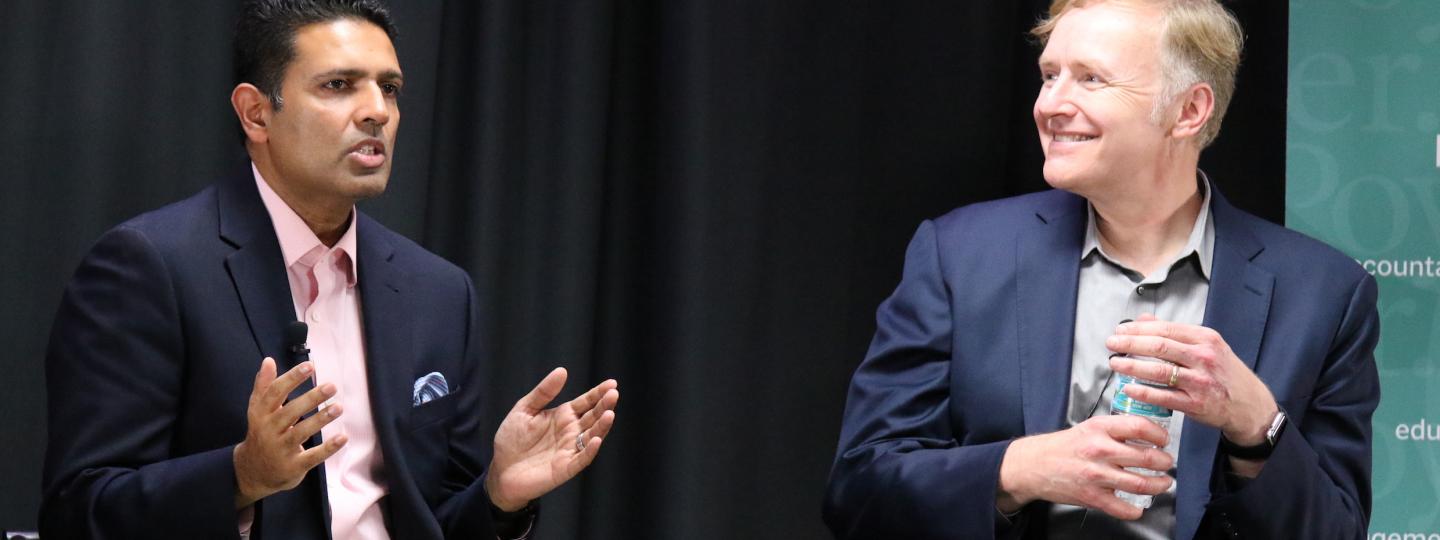People born 10 years ago will probably not need to have a driver’s license. And many of today’s babies will not have jobs — at least not as we know the 40-hour workweek now.
That’s the vision of the near future that Allen Blue attributes to the speed at which technology is evolving. Blue, the co-founder and vice president of product management at LinkedIn, said the world is headed into an era in which machines will replace minds.
Within a generation, at least 10 percent (some estimates say as much as 40 percent) of existing jobs will have been replaced by machines.
Blue and PBS host Hari Sreenivasan spoke at a Community Conversation hosted Wednesday in conjunction with Poynter’s “A Journalist's Guide to Covering the Future of Work” seminar. Both noted that jobs requiring soft skills will be the hardest for machines to replace.
RELATED EVENT: Poynter's next Community Conversation with NBC anchor Ali Velshi will be Tuesday, Oct. 9. Velshi will help make sense of American economy and business right now.
The downstream impact of artificial intelligence, robotics and other innovations is unknown, but repeatable tasks are close to being automated, Blue said. Machines with color sensors and delicate pinchers are already able to move through rows of strawberries to harvest fruit just before its peak ripeness, Sreenivasan said. That has ramifications on farmers as well as the influx of workers — many of whom are immigrants — to help with harvest.
So as the Second Machine Age, as MIT scholars call it, approaches, how can we humans best be prepared?
Blue said key competencies that humans possess are collaboration and effective planning. One tactic for staying at least one step ahead includes developing lifelong learning.
A sense of “How do I teach myself something new?” is crucial, Sreenivasan said. “If you don’t have that internal drive, if you don’t have an idea of how to find the resources and good information,” you’re not going to make it. He said Americans need to realize that a four-year degree isn’t the only way to cultivate important life skills. Even educators he has interviewed, he said, acknowledge that degree-focused learning is an unsustainable model that perpetuates “living in a bubble.”
Through the data that users provide to LinkedIn, Blue said, the service is able see trends in job types and the skills required. By monitoring data, LinkedIn can identify “skill gaps.” In Denver, an influx of residents led to a shortage of medical workers. But the addition of more physicians wasn’t the answer; the city also needed medical coders. So LinkedIn started serving up suggestions of schools that teach medical coding.
Sreenivasan said diversity — particularly involving more women and people of color — is critical in technology fields to avoid letting “brogrammers” set the parameters for how data is collected and analyzed. But aside from STEM careers, some of which could easily be overtaken by technology, fostering creativity and compassion will differentiate people from machines.
For example?
“We don’t have a robot that can be an effective nurse,” Sreenivasan said.







